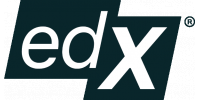- De www.edx.org
Programming for Data Science

- Individualizado
- Acesso livre
- Certificado pago
- 10 sequências
- Introductive Level
Detalhes do curso
Programa de Estudos
Section 1: Creative code - Computational thinking
Understanding what you can do with Processing and apply the basics to start coding with colour; Learn how to qualify and express how algorithms work.
Section 2: Building blocks - Breaking it down and building it up
Understand how data can be represented and used as variables and learn to manipulate shape attributes and work with weights and shapes using code.
Section 3: Repetition - Creating and recognising patterns
Explain how and why using repetiton can aid in creating code and begin using repetition to manipulate and visualise data.
Section 4: Choice - Which path to follow
How to create simple and complicated choices and how to create and use decision points in code.
Section 5: Repetition - Going further
Discussing advantages of repetition for data visualisation and applying and reflecting on the power of repetitions in code. Creating curves, shapes and scale data in code.
Section 6: Testing and Debugging
Understanding why and how to comprehensively test your code and debug code examples using line tracing techniques.
Section 7: Arranging our data
Exploring how and why arrays are used to represent data and how static and dynamic arrays can be used to represent data.
Section 8: Functions - Reusable code
Understand how functions work in Processing and demonstate how to deconstruct a problem into useable functions.
Section 9: Data Science in practice
Exploring how data science is used to solve programming problems and how to solve big data problems by applying skills and knowledge learned throughout the course.
Section 10: Where next?
Understand the context of big data in programming and transform a problem description into a complete working solution using the skills and knowledge you've learned throughout the course, and explore how you can expand the skills learned in this course by participating in future courses.
Pré-requisito
Instrutores
Katrina Falkner
Head - School of Computer Science
University of Adelaide
Claudia Szabo
Senior Lecturer, School of Computer Science
University of Adelaide
Nick Falkner
Associate Professor, School of Computer Science
University of Adelaide
Editor

Plataforma
EdX est une plateforme d'apprentissage en ligne (dite FLOT ou MOOC). Elle héberge et met gratuitement à disposition des cours en ligne de niveau universitaire à travers le monde entier. Elle mène également des recherches sur l'apprentissage en ligne et la façon dont les utilisateurs utilisent celle-ci. Elle est à but non lucratif et la plateforme utilise un logiciel open source.
EdX a été fondée par le Massachusetts Institute of Technology et par l'université Harvard en mai 2012. En 2014, environ 50 écoles, associations et organisations internationales offrent ou projettent d'offrir des cours sur EdX. En juillet 2014, elle avait plus de 2,5 millions d'utilisateurs suivant plus de 200 cours en ligne.
Les deux universités américaines qui financent la plateforme ont investi 60 millions USD dans son développement. La plateforme France Université Numérique utilise la technologie openedX, supportée par Google.

